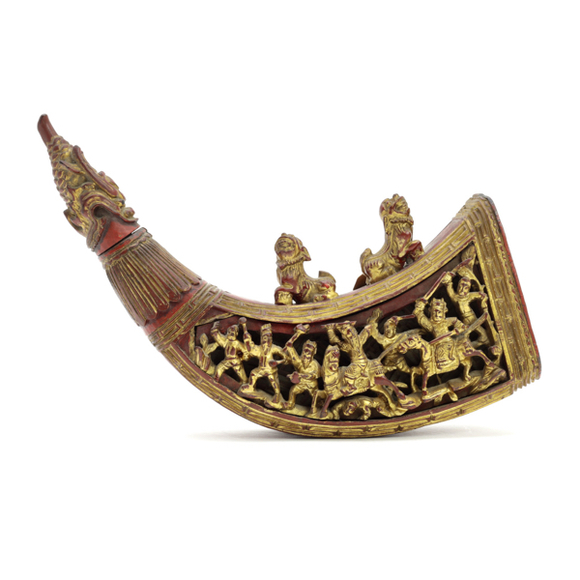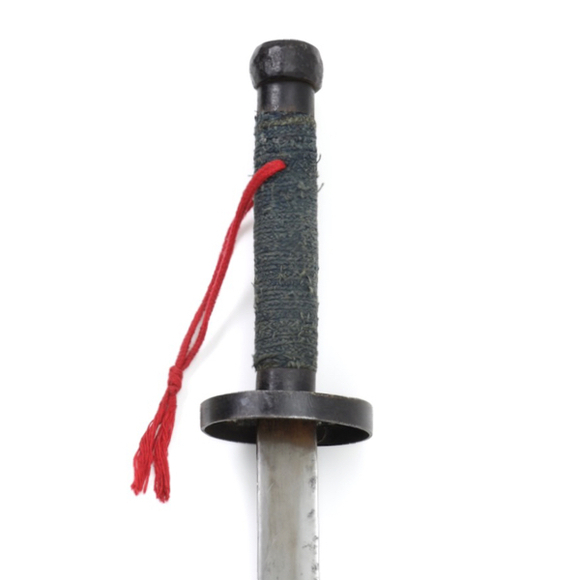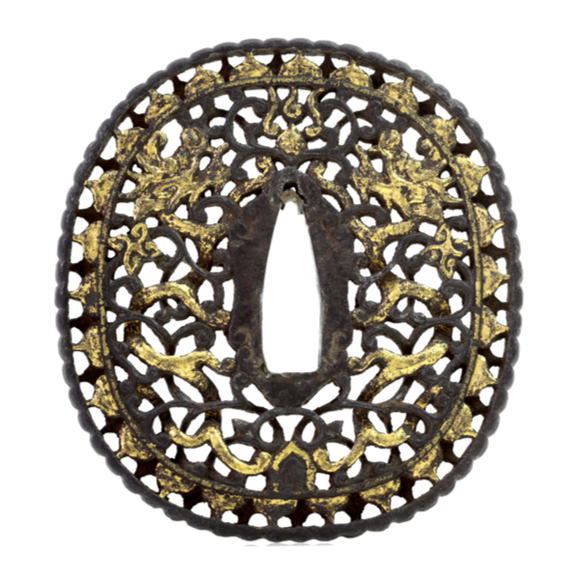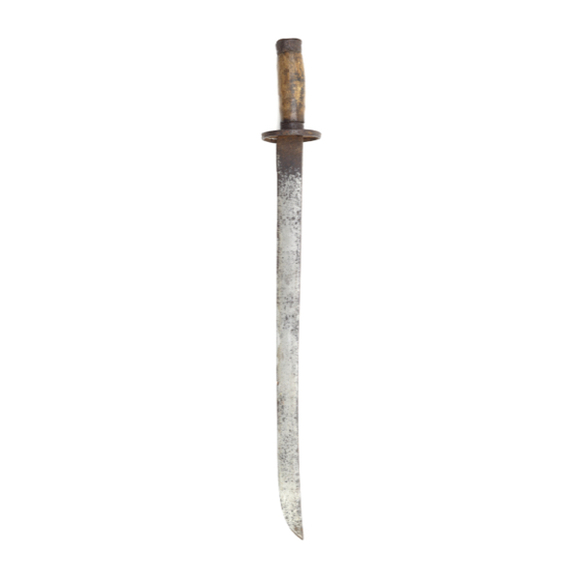Description
The Vanguard, Qiánfēng (前鋒) in Chinese and gabsihiyan in Manchu, was a an elite Qing dynasty military unit. It was part of the imperial guard. The Vanguard consisted of some 1500 men drawn from the Manchu and Mongol banners. The corps was second only to the Imperial Bodyguard in both pay and prestige. The Vanguard lead the way when the emperor left the palace. It did the same on campaign, clearing obstacles for the main army and performing scouting operations.1
Equipment
The 18th century Huangchao Liqi Tushi lists some specialized equipment that was exclusively carried by the Qing Vanguard. They include two large knives or shùndāo (順刀), two scythes and two axes, a special type for each of the two wings the Vanguard consisted of.2
Officers were required to prepare for themselves:
- Helmet
- Armor
- Bowcase & quiver
- Saber
- Bow
- Arrows
- Conch shell horn
Soldiers prepared for themselves:
- Bow
- War arrows
- Saber
- Whistling arrows 3
The presence of whistling arrows is interesting as they were not carried by regular officers and soldiers during this period. In earlier times, whistling arrows are mentioned as being used for signaling during battle. By the Qing, firearms were in such widespread use that their sound would not be heard over the thundering fire of musket and cannon. Almost all whistling arrows found in Qing texts are associated with sports and hunting.
The Vanguard, during scouting operations, would still move in silence before a battle commenced. I think this is why they still were issued whistle arrows. They may have been used as a signal to indicate distress.
Structure
The left wing consisted of the Bordered Yellow, Plain White, Bordered White and Plain Blue Banners.
The right wing consisted of the Plain Yellow, Plain Red, Bordered Red and Bordered Blue Banners.
Left Wing Commander, Zuǒ Yì Qiánfēng Tǒnglǐng (左翼前鋒統領). 2a.
Right Wing Commander, Yòu Yì Qiánfēng Tǒnglǐng (右翼前鋒統領). 2a.
Per wing:
4 Vanguard Colonel, Qiánfēng Cānlǐng (前鋒參領). 3a.
4 Vanguard Imperial Bodyguards, Qiánfēng Shìwèi (前鋒侍衛). 4a.
Notes
1. Mark C. Elliott; The Manchu Way, Stanford University Press, 2001, page 81.
2. Pu Jiang et al., eds., Huangchao Liqi Tushi (皇朝禮器圖式), or "Illustrated Regulations on the Ceremonial Paraphernalia of the Dynasty", Palace Edition of 1766 (British Library, 15300.e.1). This version is based on a manuscript of 1759.
3. See the Qianlong (1791) and Jiaqing (1805) editions of the qinding junqi zeli (欽定軍器則例) or "Imperially Commissioned Regulations and Precedents on Military Equipment". Chapter 13.






